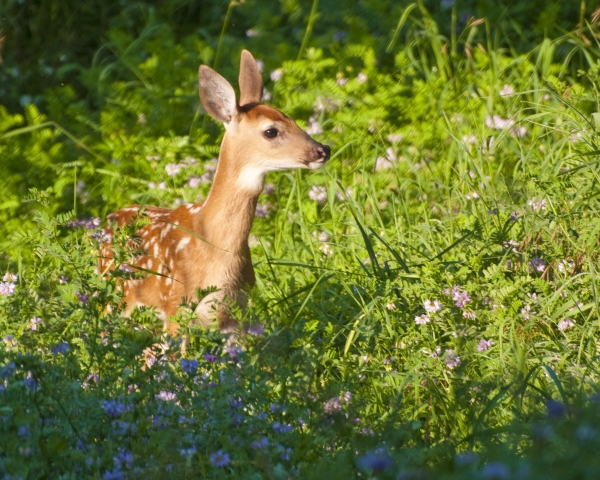
Over 50 miles of refuge trails and roads provide excellent opportunities for wildlife observation in many different upland and wetland habitats. Moosehorn NWR maintains 37 freshwater impoundments for waterfowl and wading birds. Many of the impoundments offer exceptional wildlife viewing opportunities and are accessible by the refuge trail system. In addition to the refuge’s roads and trails, there are two wildlife viewing platforms that can be accessed from the Charlotte Road. The eagle viewing platform is one of the best bald eagle public viewing locations in the state of Maine.
Eagle Observation Platform
Moosehorn has received national attention since a pair of bald eagles started nesting on an osprey nesting platform in 1991. The pair has successfully raised 13 chicks since then. The observation platform is located along Rt. 1, which is wheelchair accessible and includes free, permanently-mounted binoculars. Two osprey nests are also visible.
Observation Blind
Observe and photograph waterfowl, beavers, and other wildlife in Upper Magurrewock Marsh. Located on the Charlotte Road between the refuge headquarters and Rt. 1. The blind is wheelchair accessible and doubles as a fishing pier.
50 Miles of Trails
Three trails and miles of refuge dirt roads, closed to private vehicles, are open to hiking and biking. These pass by many different habitat types and are great opportunities to find wildlife. At the Edmunds Division, find marine life in intertidal pools or search for ocean shorebirds.
The Woodcock Trail
This trail is excellent for observing the spring courtship flights of its namesake and is wheelchair accessible.
Frequently Sighted Wildlife
Mammals - Moose, beaver, black bear, deer, fox, porcupines, red squirrels.
Birds - Bald eagle, osprey, common loon, American kestrel, various ducks and geese, woodcock, owls, and ruffed grouse.
Other - Painted turtles, snapping turtles, many salamanders and frogs.
Viewing Tips
- Dawn and dusk are the best times to see wildlife. Little is moving on hot, humid summer afternoons or on windy days.
- Observe from the sidelines. Leave "abandoned" young animals alone. A parent is probably close by waiting for you to leave. Don't offer snacks; your lunch could disrupt wild digestive systems.
- Try sitting quietly in one good location. Use binoculars or a long lens for a closer look. Let wildlife get used to your presence.
- Teach children quiet observation. They will learn the value of patience and other wildlife watchers will appreciate your consideration.

